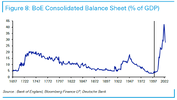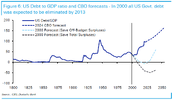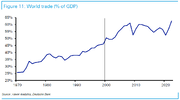- Joined
- 15 June 2023
- Posts
- 1,043
- Reactions
- 2,255
In the late 1990s gold was considered by Australia's economic movers and shakers as old hat, soiled goods. We were told our sophisticated financial system had moved on.
Well we all know where the system ended up - in the GFC without a paddle. Had you invested in some shiny stuff you would be well rewarded by now. This week the price of gold jumped by more than $19. It's sitting somewhere around $US1115.00 an ounce.
In November 1997 the then Treasurer, Peter Costello, shocked some people when he announced he'd signed off on the sale of $2 billion worth of Australian bullion. On the day he announced the sale the price was around $US306.00 an ounce. At the time, according to Mr Costello, gold "no longer plays a significant role in the international financial system".
Three days after the bullion was sold Australian gold shares slumped 16 per cent. With gold languishing there were more than a few people within government and the Reserve Bank congratulating themselves on such a prescient sell off.
But no-one else seemed to be selling, certainly not the US, and Robert Champion de Crespigny at the time expressed concern about Australia's ambitious move. The then executive chairman of Normandy Mining, Australia's largest gold mining group said:
"I think the Reserve bank has handled this extremely clumsily". Gold, he said, had a future if you took a long term view.
So here it was 1997 and Australia had sold two thirds of its gold assets in a single day, and sold into a buyer's market.
While the sale helped pay down debts, the deal was to cost Australia billions of dollars in the long run. But at the time people were lining up to congratulate the Treasurer.
There are still plenty of movers and shakers who believe that gold is old hat, or soiled goods.Yes, Costello. Another sorry tale and one of the many reasons he'd never be our PM.
An ABC news article from 2010 about Costello's 1997 sell off of approx. two thirds of our bullion for $2B, reads that at the time it was said to have been a good call.
Not for too long as hindsight will differ and show it was a very bad judgement and decision, especially in light of the big buyer (and others) that's still gobbling up the yellow metal.
Article reads in part:
I believe that Bitcoin is a load of bs. However investors around the world have been bidding it up over the last week and selling gold.There are still plenty of movers and shakers who believe that gold is old hat, or soiled goods.
these are the folks who argue that digital coins/currency is going to replace gold.
Mick








Hello and welcome to Aussie Stock Forums!
To gain full access you must register. Registration is free and takes only a few seconds to complete.
Already a member? Log in here.